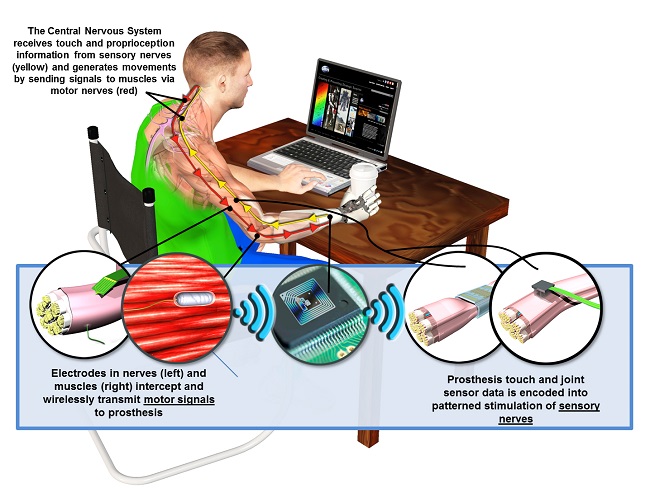Cyborg technology has taken another step further with the news that the US Defense Advanced Research Projects Agency (DARPA) is developing a prosthetic arm with a sense of touch.
While prosthetic arms have been around for decades with ever-increasing usability, the one advancement that has yet to bridge the gap between nature and machine is our sense of touch, which to a prosthetic arm user, is completely non-existent.
Aside from the familiarity of our ability to touch objects, touch also plays a vital role in our ability to use them, therefore, picking up and interacting with objects is a more difficult experience for prosthetic arm users.
Now, DARPA has received the necessary backing to develop what it is calling its Hand Proprioception and Touch Interfaces (HAPTIX) programme, which will build a huge array of sensors into the prosthetic limb to provide the sense of touch.

How HAPTIX will work. Image via DARPA
Aside from returning a sense of touch to the user, DARPA also claims that it could play a crucial part in the treatment of ‘phantom limb pain’ – whereby the user feels pain in their non-existent limb – which affects about 80pc of amputees.
Now entering phase one of testing, HAPTIX is testing to see what approaches and technology will best work with the arm, before moving on to test these ideas in phase two.
The military research division has been working towards developing better prosthetics in the last few years and now the HAPTIX programme will build on advanced neural-interface technologies developed through DARPA’s Reliable Neural-Interface Technology (RE-NET) programme.
This development comes after US President Barack Obama said in his State of the Union address in January that the development of this technology is in the national interest “so that a veteran who gave his arms for his country can play catch with his kids again”.